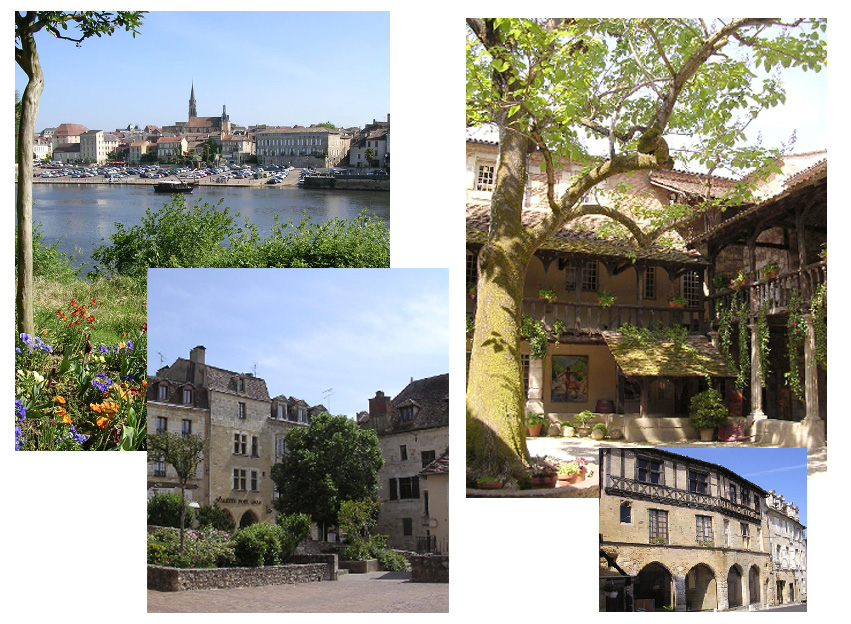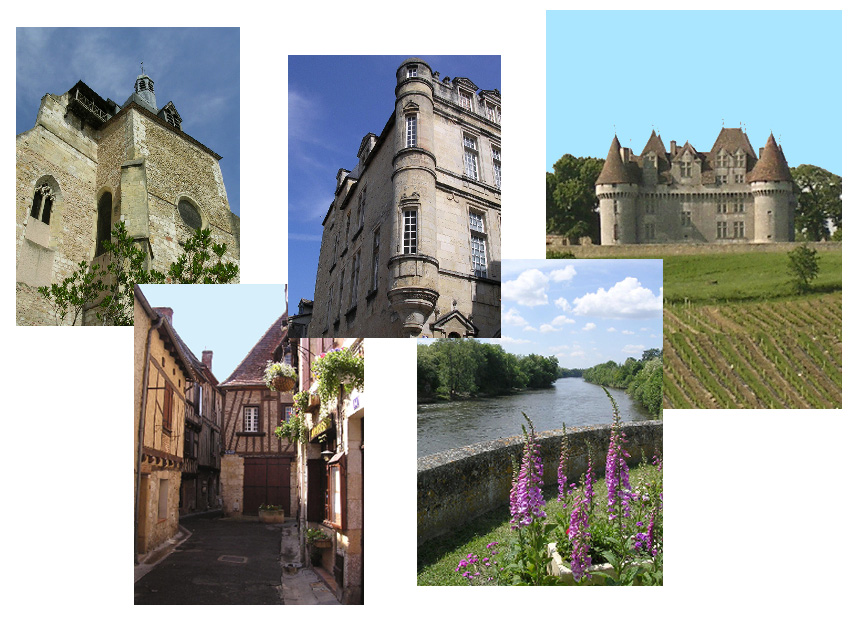|
BERGERAC
Villes
et villages fleuris
Dordogne
(24) - Aquitaine
Altitude 33 m. - 27000 habitants
Paris 550 km. - Bordeaux 90 km

Le
Pays de Bergerac, parfois nommé Périgord Pourpre
offre un vaste champ d'investigation touristique tant
son territoire est grand et riche de particularités régionales.
Il représente souvent la Porte d'entrée du Périgord
et voit donc un grand nombre de visiteurs y faire
halte afin d'organiser la suite de leur séjour.
"Le
paysage de Bergerac recèle les trésors d'une mémoire
ouverte aux promeneurs. De bastide en bastides et de
moulins en châteaux, c'est le temps qui remonte un
cour d'eau". Le Pays de Bergerac, c'est aussi le
Pays des Bastides, ces villes "nouvelles" crées
de toutes pièces à la fin du XIIIème siècle par
les anglais ou encore par les français, engagés dans
une très longue guerre. Monpazier présente l'aspect
le plus dur de cette architecture caractéristique
assez répandue dans le grand Sud-Ouest. Lalinde,
Eymet, Beaumont, Molières, Villeréal et Castillonnès
chacune est singulière et offre un charme différent.
Le village médiéval d'Issigeac présente encore un décor
d'un autre âge et vous ramène en douceur vers
Bergerac. Région charnière entre la Dordogne et la
Gironde; le Pays de Montaigne, les Jardins de Sardy ou
encore la villa gallo-romaine de Montcaret en présente
un aperçu prometteur.
Dominant la vallée, le château de Monbazillac, joyau
d'architecture Renaissance, présente cependant de
nombreuses caractéristiques militaires médiévales
(mâchicoulis, ouvertures de tir, douves, etc.) il
permet de conjuguer tourisme culturel, gastronomique
et viticole.
Dans un autre style, le château de Lanquais séduira
lui aussi par son caractère authentique et son
ameublement qui donne à penser que les occupants, siècles
après siècles continuent d'habiter les lieux.

Looking
out over the Dordogne valley, is the deligntful,
fairytale, Chateau de Monbazillac. Here the tourist
can enjoy both : the well preserved example of
Renaissance architecture which has all the medieval
military characteristics nevertheless (cannon-ports,
machicolations, moat, etc;) which are from now on
simply aesthetic and symbolic; as well as the food and
fine sweet wines of the Monbazillac appellation. The
Chateau de Lanquais is also fascinating. The original
fortress was built during the Hundred Years War to
which was added a fine Renaissance palace. The
authenticity of the building and its furnishings
plunge the visitors back into history and the daily
lives of past unhabitants.
A little way away, on a bend of the river Couze, is
the superb Chateau de Bannes. standing on a rocky
outcrop it provides a beautiful setting for summer
theatre productions.
Many of the traditional craft industries are still
practised in the region. One example can be found at
the Moulin de la Rouzique at Couze where paper is
still made from cotton and linen waste.
The south-west corner of the Perigord is also famous
for its bastides, a string of "news" towns
created in the 13th century, by both the English and
the French, essentialy to promote commerce. Later,fortified,
they became very important in the Hundred Years War
and changed hands many times. Monpazier is the finest
local example but the bastides of Eymet, Lalinde,
Beaumont, Molières, Villeréal and Castillonnès each
have a singular charm. The medieval village of
Issigeac offers yet another example of a bygone age
and subtly brings the visitor back to Bergerac and its
history.
The
area sandwiched between the rivers Dordogne and
Gironde is known as "le Pays de Montaigne"
and offers a variety of scenery and tourist
attractions. Good examples are the Tour de Montaigne,
the Jardins de sardy and the Gallo-roman villa at
Montcaret.
|